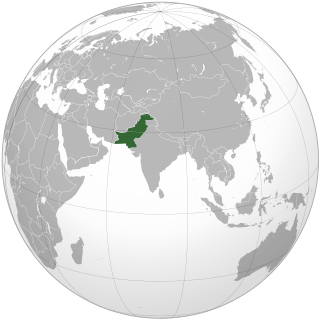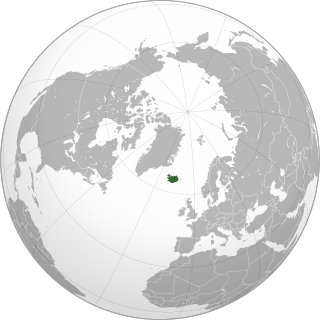A toll-free telephone number or freephone number is a telephone number that is billed for all arriving calls. For the calling party, a call to a toll-free number from a landline is free of charge. A toll-free number is identified by a dialing prefix similar to an area code. The specific service access varies by country.
A telephone numbering plan is a type of numbering scheme used in telecommunication to assign telephone numbers to subscriber telephones or other telephony endpoints. Telephone numbers are the addresses of participants in a telephone network, reachable by a system of destination code routing. Telephone numbering plans are defined in each of the administrative regions of the public switched telephone network (PSTN) and in private telephone networks.

The Australian telephone numbering plan governs the allocation of telephone numbers in Australia. It has changed many times, the most recent major reorganisation by the Australian Communications and Media Authority taking place between 1994 and 1998.
In Argentina, area codes are two, three, or four digits long. Local customer numbers are six to eight digits long. The total number of digits is ten, for example, phone number (11) 1234-5678 for Buenos Aires is made up of a 2-digit area code number and an 8-digit subscriber's number, while (383) 123-4567 would be an example of a Catamarca number.

Numbers on the Irish telephone numbering plan are regulated and assigned to operators by ComReg.

The dialling plan for mobile networks and new landline operators is closed; all subscriber numbers must be dialled in full. For landline numbers starting with 02, the dialling plan used to be open; the trunk digit and area code could be omitted if the caller was in the same area code as the callee. However, starting May 3, 2008, all landline numbers must be dialled in full.
The Brazilian telephone numbering plan uses a two-digit area code plus eight-digit local phone numbers for landlines and nine digits for mobile lines. Public utility services use short phone numbers, always starting with 1.

Telephone numbers in the Philippines follow an open telephone numbering plan and an open dial plan. Both plans are regulated by the National Telecommunications Commission, an attached agency under the Department of Information and Communications Technology (DICT).
Telephone numbers in Nigeria use an open numbering plan. They are composed of a combination of an area code and a local line or subscriber telephone number. Area codes consist of one digit or two digits. Local telephone numbers contain from five to seven digits, and may vary within the area code. Mobile phone numbers start with 070, 080 or 081, 090 or 091 and are followed by eight digits.

Telephone numbers in Italy are managed by the Autorità per le Garanzie nelle Comunicazioni (AGCOM), a national regulatory authority for the communication industry located in Rome.

Telephone numbers in the Republic of China (Taiwan) use a system of area codes, beginning 02 to 08. The leading digit(s) following the area code denote the network operator (Chunghwa Telecom and its competitors). Mobile numbers begin 09. The international code for calls into Taiwan is 886.

The regulation of telephone numbers in Germany is the responsibility of the Federal Network Agency of the German government. The agency has a mandate to telecommunications in Germany and other infrastructure systems.

Telephone numbers in Pakistan are ten digits long. Landline numbers and mobile numbers have different structures. Geographically fixed landline are prefixed by an area code which varies in length depending on the significance of the place. Mobile numbers are prefixed (03) followed by a two-digit code indicating the telephone operator. The international country code for Pakistan is '+92'.

Telephone numbers in Russia are administered by Roskomnadzor, and Ministry of Digital Development, Communications and Mass Communications of the Russian Federation. Russia's National Numbering Plan (NNP) is a four-level telephone numbering plan with local, zone, country, and international scopes, implementing a closed numbering plan, in which the number of digits of all national significant numbers (NSN) assigned to subscriber telephones is fixed at ten, with three digits for the area code, and a seven-digit subscriber number which includes a zone code of up to two digits. Internationally, Russia participates in the numbering plans of the International Telecommunication Union (ITU) provided by recommendations E.164 and E.123, using the telephone country code 7.

Telephone numbers in Iceland are seven digits long and generally written in the form xxx xxxx or xxx-xxxx and the E.123 format specifies +354 xxx xxxx from abroad since the country code is +354.

A telephone number in Belgium is a sequence of nine or ten digits dialed on a telephone to make a call on the Belgian telephone network. Belgium is under a full number dialing plan, meaning that the full national number must be dialed for all calls, while it retains the trunk code, '0', for all national dialling.
National conventions for writing telephone numbers vary by country. The International Telecommunication Union (ITU) publishes a recommendation entitled Notation for national and international telephone numbers, e-mail addresses and Web addresses. Recommendation E.123 specifies the format of telephone numbers assigned to telephones and similar communication endpoints in national telephone numbering plans.
Telephone numbers in San Marino have six to ten digits. Numbers starting with either 0, 8 or 9 are assigned to landlines, 6 is used for mobile services, 5 for IP telephony services and 7 for premium numbers. No trunk prefixes are used: all the digits are always dialed.

North Macedonia's telephone numbering plan is the system used for assigning telephone numbers in North Macedonia. It is regulated by the Agency for Electronic Communications (AEK), which holds responsibility for telecommunications.












